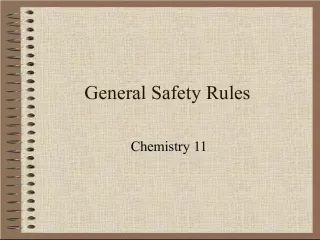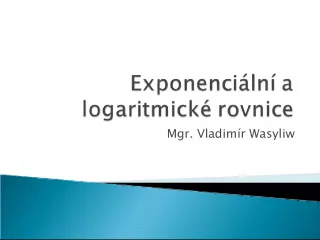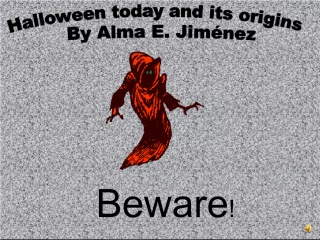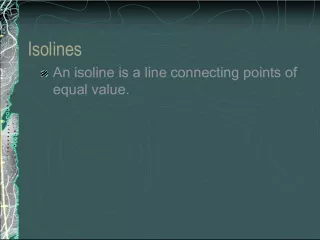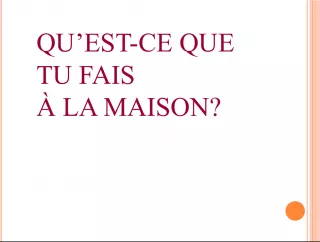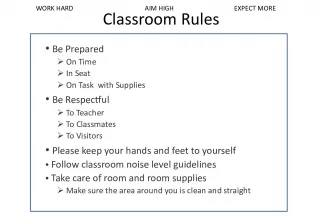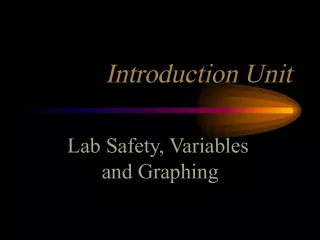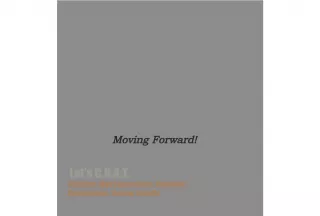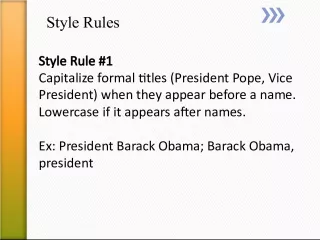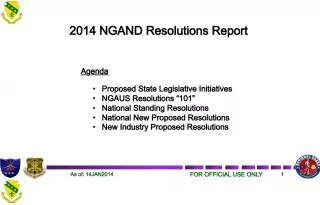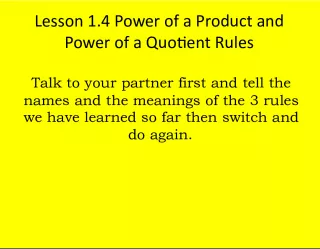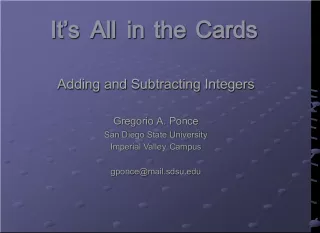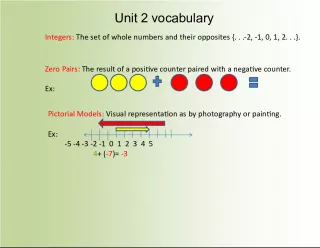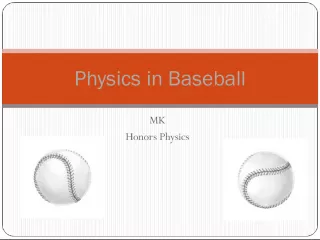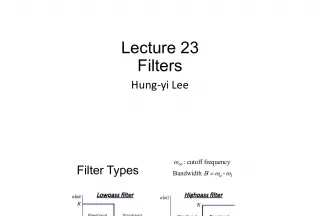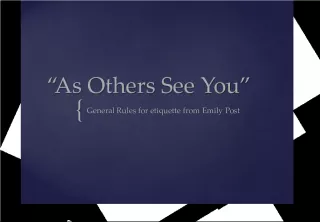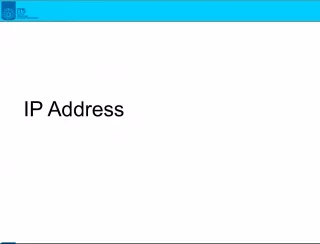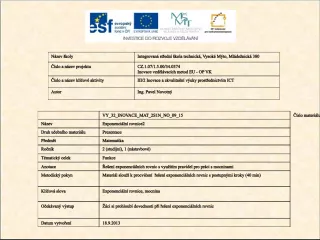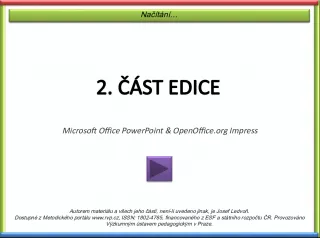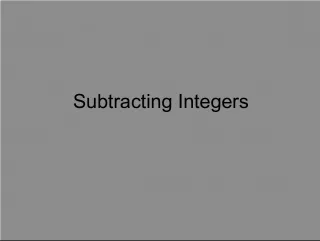Rules of Forward Passes in Football
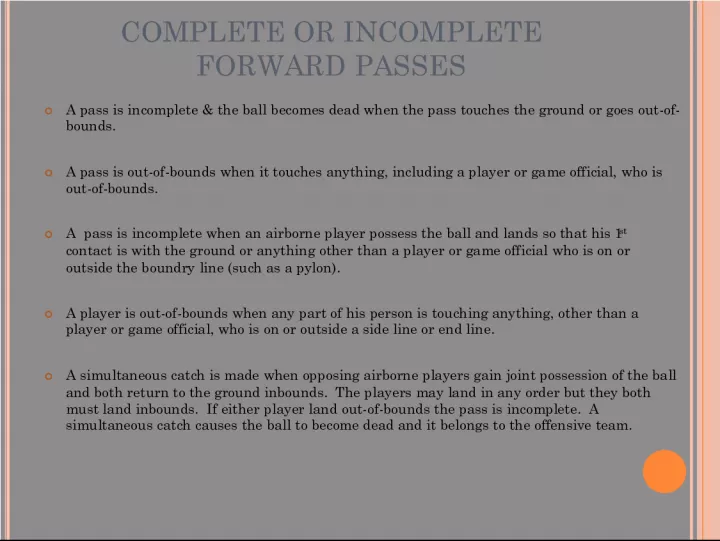

Understand the conditions for a complete and incomplete forward pass, including when the pass is out of bounds, and what constitutes a simultaneous catch.
- Uploaded on | 1 Views
-
 remon
remon
About Rules of Forward Passes in Football
PowerPoint presentation about 'Rules of Forward Passes in Football'. This presentation describes the topic on Understand the conditions for a complete and incomplete forward pass, including when the pass is out of bounds, and what constitutes a simultaneous catch.. The key topics included in this slideshow are . Download this presentation absolutely free.
Presentation Transcript
1. COMPLETE OR INCOMPLETE FORWARD PASSES A pass is incomplete & the ball becomes dead when the pass touches the ground or goes out-of- bounds. A pass is out-of-bounds when it touches anything, including a player or game official, who is out-of-bounds. A pass is incomplete when an airborne player possess the ball and lands so that his 1 st contact is with the ground or anything other than a player or game official who is on or outside the boundry line (such as a pylon). A player is out-of-bounds when any part of his person is touching anything, other than a player or game official, who is on or outside a side line or end line. A simultaneous catch is made when opposing airborne players gain joint possession of the ball and both return to the ground inbounds. The players may land in any order but they both must land inbounds. If either player land out-of-bounds the pass is incomplete. A simultaneous catch causes the ball to become dead and it belongs to the offensive team.
2. AIRBORNE RECEIVER An airborne receiver who obtains possession of the ball while in the air, must maintain possession when he contacts the ground. A catch is not completed until the receiver touches the ground inbounds with clear possession of the ball. The fact that an airborne receiver has a firm grasp of the ball while airborne is NOT a factor in determining whether the pass is complete. A catch is the act of establishing player possession of a live ball which is in flight, and 1 st contacting the ground inbounds or being contacted by an opponent in such a way that he is prevented from returning to the ground inbounds while maintaining possession of the ball. 2-4-1: A catch is the act of establishing player possession of a live ball which is in flight, and 1 st contacting the ground inbounds or being contacted by an opponent in such a way that he is prevented from returning to the ground inbounds while maintaining possession of the ball. returning to the ground inbounds while maintaining possession of the ball. The key phrase of 2-4-1 is: returning to the ground inbounds while maintaining possession of the ball. The rules are clear, there is no catch if a player does not maintain possession through the contact with the ground. Another way to look at 2-4-1 is: The ground can cause an incompletion. An airborne receiver must maintain control if going to the ground in the process of completing the catch It doesn’t matter whether a receiver goes to the ground on his own or is contacted by a defender. The down does not end until it’s clear the grounded player has secure possession of the ball, he is out of bounds, or the ball touches the ground. A player who returns to the ground inbounds must remain inbounds until he obtains secure possession of the ball.
3. AIRBORNE RECEIVER A catch is also complete if the receiver is prevented from landing inbounds because of contact by an opponent (2-4-1). The official must determine if the player would have returned to the ground inbounds without the opponents contact. (4.3.3 B) comment If the official judges the player would have landed out-of-bounds without the contact the pass is incomplete. If the official is in doubt the pass is incomplete. If the official judges the player would have landed inbounds without the contact and his forward progress is stopped in the field of play, the forward progress spot is where the player is contacted and the clock continues to run (2-15-2). A force out call on an airborne receiver may only be granted if the contact by the defender changes the direction that the receiver was moving , the receiver still must maintain possession of the ball when he contacts the ground. If the contact by the defender only advances the receiver in their original direction it is the receiver’s responsibility to make 1 st contact inbounds. In all cases where there is contact and a forward moving receiver is forced forward in the same direction and out-of-bounds without 1 st touching inbounds, the pass is incomplete. If a defender’s added force is in the general direction the receiver is moving, it is not considered a factor affecting his landing spot and the pass is incomplete (7.5.2L).
4. AIRBORNE RECEIVER Near a sideline, when an airborne receiver is contacted by a defender and lands with the ball out-of-bounds, the official may rule the receiver would have landed inbounds without contact and the pass is complete at that spot. This always applies if the receiver is pushed backwards or laterally (forward progress is stopped, the clock continues to run). In all cases where there is contact and a forward moving receiver is forced forward in the same direction and out-of-bounds without touching inbounds, the pass is incomplete. 2-15-1: Forward progress is defined as the end of advancement toward the opponents goal. Summary of forward progress spots for airborne receivers 1) When the contact pushes the receiver forward and the receiver is moving forward the pass is incomplete if 1 st contact is out-of-bounds. 2) When the contact pushes the receiver forward and the receiver jumped straight up or was moving backward, the forward progress spot is where the ball crosses the sideline and the pass is complete and the clock continues to run. 3) When the contact pushes the receiver backward or laterally, the receiver is entitled to the forward most spot of the ball when contacted by an opponent and the pass is complete and the clock continues to run.
5. AIRBORNE RECEIVER’S FORWARD PROGRESS AIRBORNE RECEIVER’S DIRECTION CONTACT FORWARD PROGRESS DIRECTION PUSHES RECEIVER SPOT OUT OF BOUNDS __________________________________________________________________________________________________________________ FORWARD FORWARD NONE, INCOMPLETE PASS ___________________________________________________________________ BACKWARD/LATERALLY POINT OF CONTACT (wind clock) __________________________________________________________________________________________________________________ STRAIGHT UP FORWARD WHERE BALL CROSSES SIDELINE ___________________________________________________________________ BACKWARD/LATERALLY POINT OF CONTACT (wind clock) __________________________________________________________________________________________________________________ BACKWARD FORWARD WHERE BALL CROSSES SIDELINE ___________________________________________________________________ BACKWARD/LATERALLY POINT OF CONTACT (wind clock) __________________________________________________________________________________________________________________
6. ROUGHING THE PASSER Roughing the passer is a major foul: 15 yard penalty added to the end of the last run plus an automatic 1 st down. DEFINITION: (2-32-11) The passer is the player who throws a legal forward pass. He is the passer from the time the ball is released until the pass ends, or until he moves to participate in the play. The rule does not specify any time or distance requirement, which makes roughing a judgment call. An officials judgment should be based on whether the defender knew (or should have known) that the ball had been released when the rusher arrived at a point at which he could no longer avoid contact. Personal fouls against the passer (helmet contact, face mask etc.) committed before it is clear that the ball has been thrown, are not considered roughing by rule. They are simply a personal foul and are enforced as such. This is an important distinction for penalty enforcement. The roughing rule protects not just the quarterback, but any player who attempts a legal forward pass. There cannot be roughing on a pass thrown from beyond the neutral zone. There cannot be roughing on any illegal pass (grounding etc.) There cannot be roughing on any backward pass.
7. ROUGHING THE PASSER, PENALTY ENFORCEMENT The enforcement spot for a roughing the passer foul varies depending on the result of the play (10-5-5). On a completed pass with no change of TEAM possession, the penalty is enforced from the dead ball spot, if that spot is in advance of the previous spot. If the pass is incomplete the penalty is enforced from the previous spot. If team possession changes during the down the penalty is enforced from the previous spot. This has been interpreted to mean only if possession changes during the down (interception or fumble recovery), rather than at the end of the down by rule . An example of possession change by rule is a completed pass on 4 th down that ends short of the line to gain or the play otherwise results in the ball belonging to Team B at the end of the down, these examples are enforced from the dead ball spot. If the run ends behind the neutral zone the penalty is enforced from the previous spot. The penalty enforcement for roughing the passer includes an automatic 1 st down no matter which enforcement spot is used.
8. BACKWARD PASSES The definition of a backward pass is a pass which is not forward (2-31-5) Usually a backward pass is a pitchout that is either parallel to the goal line or clearly thrown backward. All players are eligible to catch or touch a backward pass at any time (7-4-2) Any player of either team may throw a backward pass at any time anywhere on the field (7-4-1) Any player of either team may deliberately throw a backward pass out of bounds to conserve time without committing a foul and the clock will start on the snap. A forward pass may be batted in any direction by a player eligible to touch it however the passing team is not allowed to bat a backward pass in flight forward (9- 7-3). The foul is illegal batting and the penalty is 15 yds under the all-but-one. A backward pass that touches the ground is a live ball (9-7-2) and may not be batted in any direction by any player. A backward pass that is caught, intercepted or recovered remains live and the ball may be advanced (7-4-2). If a backward pass is out of bounds behind a goal line, the ball belongs to the team defending that goal and the result is either a touchback or a safety depending on which team supplied the force (7-4-4). THE INITIAL DIRECTION THE BALL IS THROWN DETERMINES WHETHER THE PASS IS FORWARD OR BACKWARD (2-31-2).
9. M OMENTUM EXCEPTION Rule 8-5-2a Exception: The momentum rule applies when a defensive player intercepts a forward pass or intercepts or recovers a backward pass inside his 5 yard line and his momentum carries him into the end zone and the ball becomes dead there. This is not a safety. The defensive team is awarded a new series at the spot of the catch if the ball is declared dead in the end zone in his team’s possession without it having returned to the field of play. The exception is also in effect if the defense fumbles the ball out of bounds from the end zone, without the ball going back into the field of play. In both of these situations the defensive team will put the ball in play at the spot of the catch.
10. SUMMARY A force out is possible in NFHS football. A backward pass may be thrown at any time by any player for any reason. A runner does not become a passer until he throws a forward pass. Roughing the passer carries a 15 yard penalty plus an automatic 1 st down The yardage will be added to the dead ball spot without a change of possession if that spot is in advance of the previous spot. The enforcement spot is the previous spot for all other situations. If a backward pass is out of bounds behind a goal line, the ball belongs to the team defending that goal and the result is either a touchback or a safety depending on which team supplied the force. THE INITIAL DIRECTION THE BALL IS THROWN DETERMINES WHETHER THE PASS IS FORWARD OR BACKWARD. The momentum rule applies when a defensive player intercepts a forward pass or intercepts or recovers a backward pass inside his 5 yard line and his momentum carries him into the end zone and the ball becomes dead there. The defensive team is awarded a new series at the spot of the catch if the ball is declared dead in the end zone in his team’s possession without it having returned to the field of play. The exception is also in effect if the defense fumbles the ball out of bounds from the end zone, without the ball going back into the field of play.

